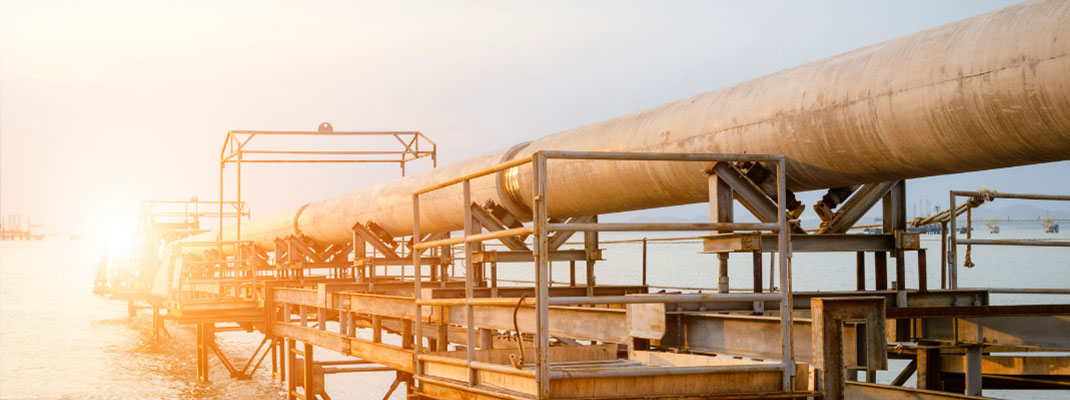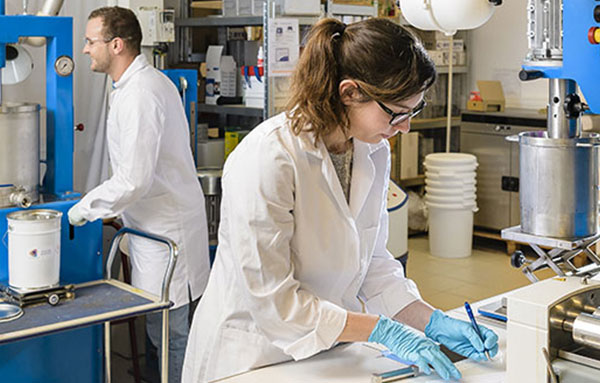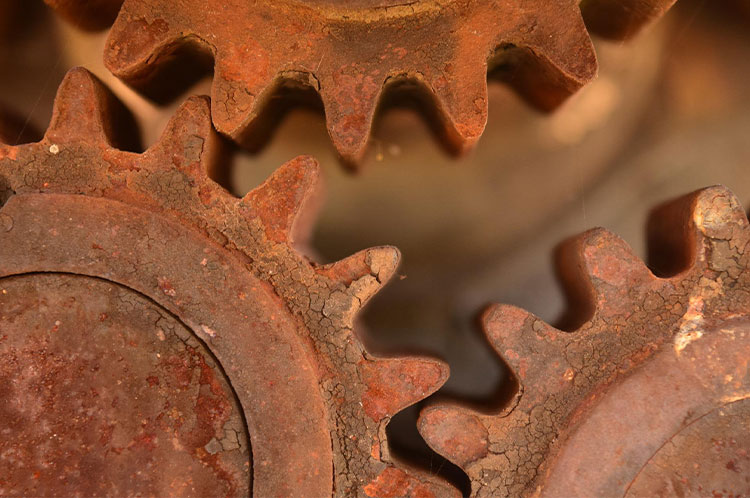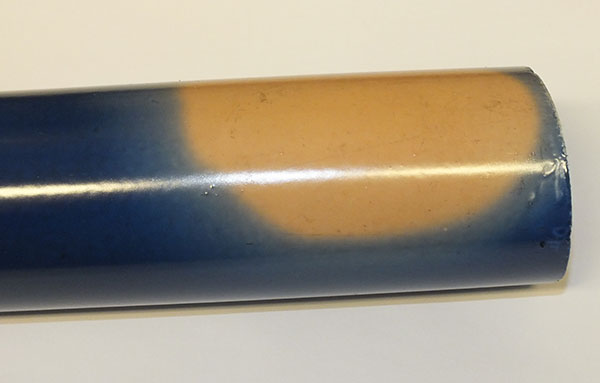How to prevent corrosion in industrial environments?
Corrosion, an economic and environmental issue
An abysmal expense every year
Corrosion-related damage represents about 3.5% of the world's GDP per year. Based on this rate, 84 billion euros are lost each year in France. On a global scale, the figure becomes staggering!
In addition to this exorbitant cost, major problems are linked to the degradation of products under environmental effect: damage to the reliability of installations, threats to industrial safety, health problems...

Aging, degradation, breakage of metallic products used in road infrastructures, oil pipelines, gas pipes, means of transportation (cars, trains, airplanes), all this is mainly the result of the interaction of the material with its surroundings, due to the reaction of corrosion.
Combating corrosion, a key factor in the energy transition
In addition to the traditional fields of use of metal, which concern a wide range of industrial sectors, better protection of materials against corrosion is an asset in the development of new applications, for example to ensure the energy transition (fuel cells, batteries, photovoltaics).
For instance, in the perspective of an energy policy involving hydrogen, many problems appear and the good conservation against corrosion is a major issue.
Do you have corrosion problems?

Predictive maintenance allow you to anticipate future failures on an equipment, a product, a system...
Our experience in the industry has allowed us to create thermodynamic smart coatings: it is a passive solution that does not need electricity, the color change occurs only when the limit is crossed.
Research and innovation to meet these challenges
Faced with the environmental, economic and societal issues related to corrosion damage, a major research effort is already in place in many laboratories (universities, engineering schools, etc.). Most major groups have an R&D activity on corrosion control.
The main difficulty is to understand the mechanisms of corrosion (oxidation properties, presence of oxygen, water...) by taking into account all the dimensions of the problem:
- Space scale: from the atomic or nanometric scale (at which corrosion phenomena start on the surface of a material) to the macroscopic scale (at which degradation occurs, often irreversible);
- Time scale, depending on the targeted life span: from a few seconds for a rocket launch, to a few hundred thousand years for nuclear waste storage materials.
Another difficulty is the diversity of the mechanisms involved (oxidation properties of layer). For instance, a distinction must be made between hot corrosion and aqueous corrosion:
- Dry or hot corrosion develops at high temperatures (several hundred degrees Celsius) when the metal is exposed to an oxidizing gas such as oxygen, sulfur or halogens. This type of corrosion occurs in the absence of an electrolyte.
- Aqueous or wet corrosion can, despite the low temperature, be very insidious because it does not result from a simple sequence of the same physical processes.
What are the means to fight corrosion process?
Choose the right materials for the job

The first idea to counter corrosion is simply to choose a product that does not corrode, or very little. We can use stainless steels, aluminum alloys, ceramics, plastics, composite products, etc. The choice of the materials must also take into account the constraints of the application (mass of the part, resistance to deformation, to heat, ability to conduct electricity, materials in contact, etc.).
But beware, there is no such thing as a truly stainless product. For example, if we consider "stainless steel", in reality this type of steel contains alloying elements (chromium, nickel system) that oxidize. It is precisely this layer of oxides that protects the steel, but this steel is only protected in certain types of surroundings. It quickly corrodes in others with high risks of resistance.
There are many types of so-called "stainless" steels: 304, 304L, 316, 316L, 420, 430, etc. Depending on the applications, and in particular the acceptable mass of the part, the physical-chemical surrounding, the implementation process (foundry, mechanically-welded, etc.), the expected mechanical resistance, etc., aluminum alloys, copper (brass, bronze, copper-nickel, etc.), nickel (Inconels), plastics, etc., can also be used.
Each material is therefore suitable for certain types of environments (like the water): its use in other environments can be catastrophic.
Design for a dedicated environment
In the design of the part itself, it is necessary to avoid confinement zones, contacts between different products, and more generally, heterogeneities.
It is also necessary to foresee the importance of corrosion (impact on solidity, etc.) and the time after which it will be necessary to change the part (preventive maintenance), or to foresee regular controls (non-destructive testing, conditional maintenance).
The control of the surrounding is also essential to fight effectively against corrosion. In a closed environment (for example, a closed water circuit), it is possible to control many parameters that influence corrosion: chemical composition (especially acidity and hardness of water), temperature, more or less abrasive character and speed or pressure of the fluid transported, etc. In an open surrounding, this becomes more delicate.
Putting in place a protection
We can try to isolate the part from the environment by a barrier: layer of paint, plastic, etc., or by a surface treatment: nitriding, chromating, plasma projection.
Corrosion being essentially a redox phenomenon, the electrochemical potential of the surface can be influenced. To simplify, during oxidation, a chemical species in the environment takes electrons from the material. If we provide electrons by another means (by an electrical generator, or by another chemical reaction), we prevent the material from losing its own electrons. This is the principle of cathodic protection.
It is thus possible to introduce another part to slow down or prevent the reaction. A first way is to use a "sacrificial anode". This new part, often made of zinc or magnesium, lowers the electrochemical potential of the protected part below the potential where it can oxidize, and will corrode instead of the part to be protected. In an aqueous environment, it is sufficient to screw or contact the sacrificial anode on the part to be protected.
In the open air, the part must be completely covered with zinc (galvanization principle), which acts not only on the surface of the part but also from the inside, thanks to a powerful iron-zinc alloy. It is also possible to put metallic particles in the paint, which combines physical barrier and cathodic protection.
A second way to achieve cathodic protection is to lower the potential of the metal with an external electrical source, by imposing a potential or a current between the part and an external anode positioned opposite the surface, but without direct contact with the metal. In this case, the anode is not consumed and does not need to be replaced.
Organize a regular inspection
In industrial installations, the phenomenon of corrosion is constantly being tracked down. The formation of corrosion is a particularly serious problem because it affects the operation of mechanical components. These can fail completely or partially. In extreme cases, entire systems can be affected by corrosion, as recently in the nuclear field. The costs involved become very high as soon as it is necessary to replace a part and to stop production.

To overcome this difficulty, predictive maintenance plans are also implemented in the industry. But it is difficult to predict the appearance of corrosion in advance. The typology of an installation, the diversity of metals involved, the variety of exposures, environments, the dynamics of air, humidity and temperature flows make the task extremely complex.
It is thus frequent that an inspection reveals the appearance of pitting and cankers (early signs of corrosion) on tanks, storage tanks, steam pipes, piping systems... In the oil industry, for example, the corrosion controls are dimensional (measurement of thickness losses, deformations of metal, etc.), electrochemical, galvanic or bio-physico-chemical.
On surface installations accessible from the outside, these controls are manual, static, punctual or even cartographic or continuous (monitoring). For inaccessible underground and under-water installations, dynamic automated systems (mobile robots) are used.
What if color intelligence could automate detection?
At OliKrom, our teams of experts have developed a new approach to detect the first signs of corrosion. The idea is to use the particular property of certain materials to change color and/or luminescence properties to signal the evolution of the structure and the presence of the first signs of corrosion on a system. This is what we call color intelligence, the art of making "colors speak" to track, signal, and inform about an industrial anomaly. It is a method of choice for the prevention of industrial corrosion.
We are already deploying this approach in the field of Energy with our industrial partner GRTGaz. We have the ability to adapt the threshold of detection and to modulate the optical response of compounds to allow optimal detection by air (such as drone). This opens the way to the automation of the control process.
According to Ahmed Fakhry of GRTGaz (research engineer, Pipeline Department, RICE), "OliKrom's innovation enables operators to detect the onset of corrosion on overhead structures by means of changes in color or luminescence. Some structures are difficult to access and this innovation reduces the cost of repairing and rehabilitating pipes".
There is no doubt that this breakthrough innovation will interest other manufacturers for the prevention of industrial corrosion. Developments have been also initiated in the aeronautics and space sectors.
Do you have a project of corrosion prevention?

Are you interested in developing an anti-corrosion solution? Do you have an industrial challenge?
Our teams are at your disposal.
![]()
CONTACT US
We will get back to you as soon as possible..
"*" indicates required fields


